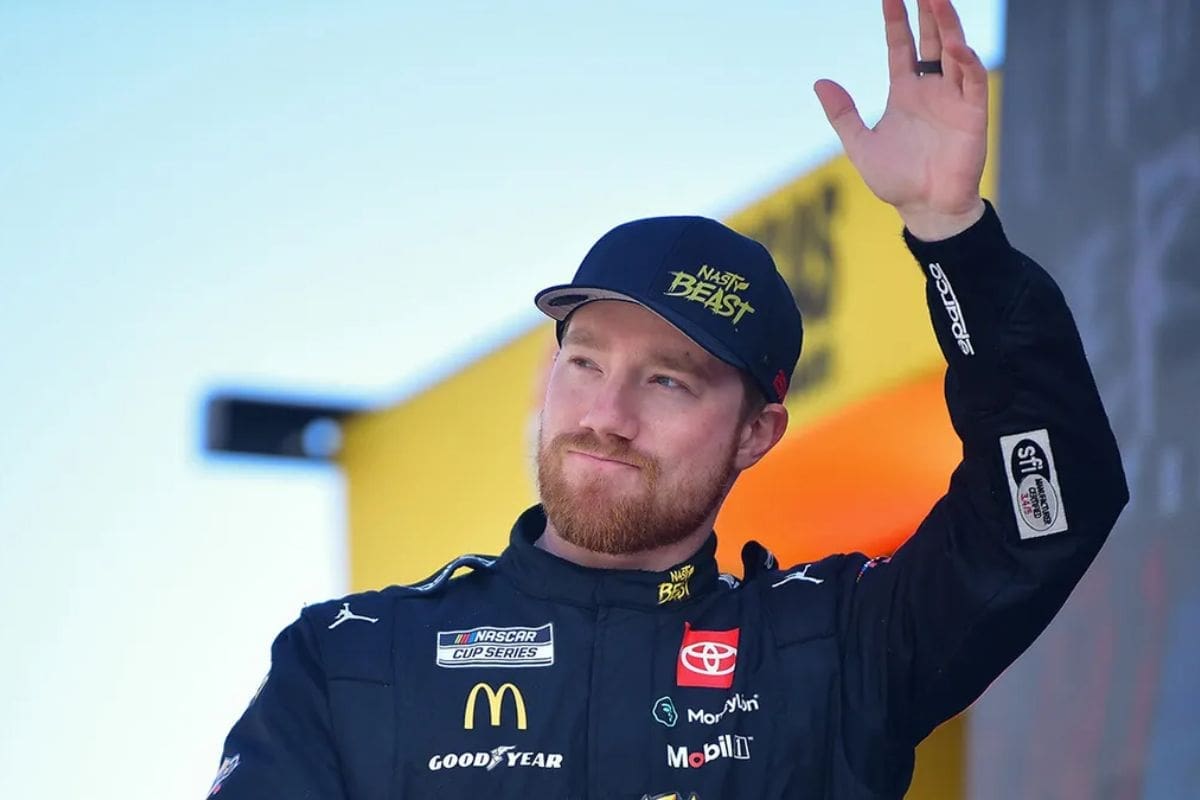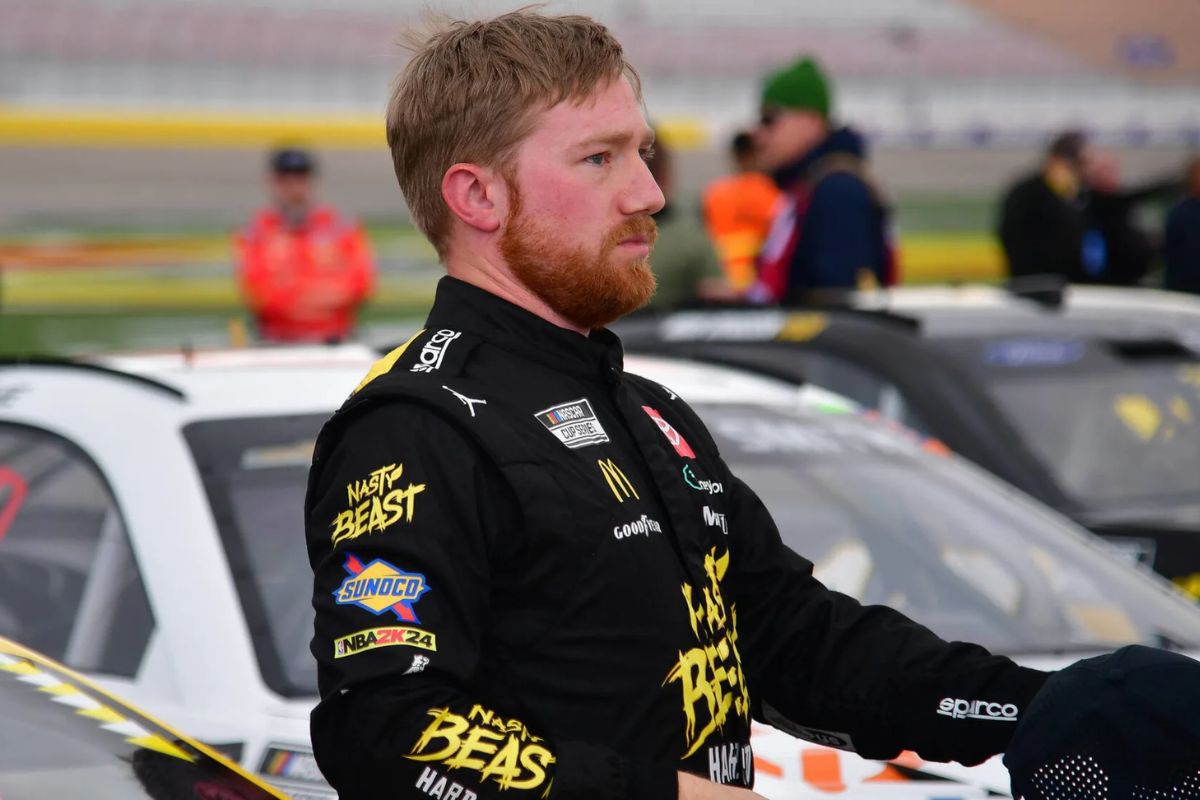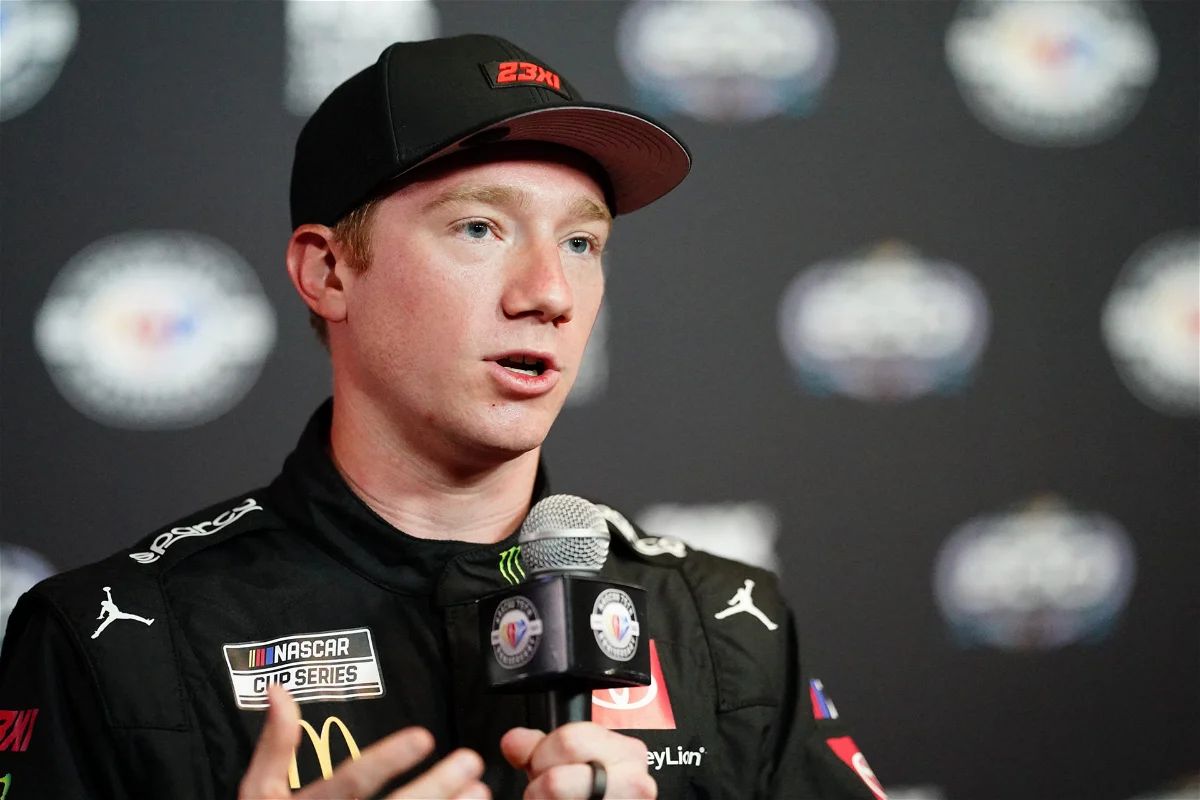Tyler Reddick Admits Mistake in Chicago Race: In an open admission that highlights the competitive and unpredictable nature of NASCAR, Tyler Reddick acknowledged his crucial mistake during the final lap of the Chicago street course race against Alex Bowman. This error, which resulted in a collision between the two drivers, not only impacted their race results but also emphasized the intense stress that the drivers experience in the closing moments of a race. Reddick’s willingness to take full responsibility shows his dedication to growth and accountability which are vital for any athlete aiming for greatness.
Key Highlights
- Tyler Reddick admitted to a misjudgment during a pivotal moment before the white flag in the Chicago race against Bowman.
- Reddick’s mistake significantly impacted his race outcome, showing the critical nature of decision-making.
- The Chicago race incident highlighted the importance of precise timing and strategy, especially during intense scenarios.
- Reddick’s reaction to his error reflected his disappointment and commitment to learning from the experience.
- The incident showed the need for continuous improvement and strategic adaptation in competitive racing.
Rain Delay and Tire Strategy
Handling the intricacies of a nearly two-hour rain delay during Stage 2, Tyler Reddick and his team made a crucial choice to switch to slick tires as the Chicago Street Course started to dry, aiming for a tactical edge in the race’s final phase. The decision was influenced by the swiftly changing track conditions on the 2.2-mile, 12-turn course, compounded by NASCAR’s strict stop time of 8:20 p.m. local time. This time constraint required agile strategic thinking and precise execution.
Reddick’s team, noticing the drying track, chose slick tires to harness the potential speed advantages they offered compared to wet-weather tires. The objective was evident: take advantage of increased traction and decreased rolling resistance to secure a competitive edge. However, this approach was not without its risks. The unpredictable nature of the street course, along with the chance of residual damp spots, presented a challenge for the drivers transitioning from wet to dry conditions.
Insights into this choice reveal a calculated risk, representing the intense sport of professional racing. Teams must continuously adjust to evolving situations, balancing the inherent risks of tire selections with the possible rewards. In this case, Reddick’s team showed a proactive stance, trying to utilize the drying track to their benefit.
Race Resumption and Caution
As the race resumed, the strategic gamble on tire selection became evident when a caution on lap 52 for a car stuck in the tire barriers provided Tyler Reddick and others a significant opportunity to reassess their positions. The decision to either remain on wet weather tires or switch to slicks was pivotal.
Several teams, including that of eventual race winner Alex Bowman, chose to stay out on their wet tires to maintain track position. Initially, this strategy seemed justified as Bowman managed to overtake Joey Hand for the lead. However, the caution flag on lap 52 acted as a critical opportunity, introducing unpredictability and reshuffling the competitive dynamics.
Reddick, among others, seized this opportunity to reassess their tire strategy. The caution period provided a brief yet significant window for drivers to recalibrate their approach, considering the evolving track conditions. This moment highlighted the delicate balance between maintaining track position and optimizing tire performance.
Final Stage Drama
The last phase of the race unfolded with remarkable intensity, as the competition heated up just four minutes before the white flag was set to signal the last lap. Tyler Reddick, piloting his No. 45 23XI Toyota, seized this pivotal moment with a renewed vigor, immediately propelling his vehicle into second place. His aggressive yet calculated driving displayed the skill of a driver in peak form, as he began to close the gap on the leading car of Alex Bowman.
However, the drama escalated rapidly as both Bowman and Reddick encountered the wall in the waning moments before the final lap. This critical sequence of events effectively transformed the race’s dynamic. Initially, Bowman’s contact with the wall disrupted his rhythm, but it was Reddick’s subsequent collision that proved more significant. The impact sapped the momentum Reddick had carefully built, relegating him from a position of competition to one of recovery.
Bowman, unfazed by his own mistake and capitalizing on Reddick’s misfortune, managed to regain control and extend his lead. The final moments of the race were a demonstration of Bowman’s ability to maintain composure under stress, ultimately securing his victory by a margin of 2.863 seconds.
Reddick’s Reaction and Disappointment
Tyler Reddick openly acknowledged his mistake, expressing a mix of frustration and bewilderment over his misjudgment during the critical moments of the race. His honest admission reflected a deep understanding of the intricacies that define high-stakes racing.
“We were catching Alex by a large margin there, and I don’t know, that puzzles me. I clearly just screwed up,” Reddick stated, representing the blend of self-reproach and confusion that often follows a crucial mistake.
Reddick’s analysis of his lapse in judgment highlights the razor-thin margin for error in professional racing. His attempt to handle the dry groove and his subsequent overcorrection reveal the delicate balance required in maintaining top performance under stress.
“Trying to stay in the dry groove and I had more than enough of dry groove. I cut the wheel a little too hard.” he elaborated, pinpointing the exact moment his strategy faltered. This admission not only shows his acute awareness of the race dynamics but also his willingness to analyze and learn from his mistakes.
“Just not focused enough, I guess. I knew I was going to get to him. I knew the earlier I could get to him, the more options I was going to have. It was going to get a little bit more slick off the (racing) line beyond Turn 8.” – (Reddick)
Recent Races and Reflection
Reddick’s recent performances, marked by near victories in New Hampshire and Nashville, highlight his potential for greatness and the fine margins that separate success from disappointment in NASCAR. In New Hampshire, Reddick led the race before a long rain delay disrupted his momentum. Despite being in a commanding position, the decision to restart the race on wet weather tires saw him struggle, eventually finishing sixth.
The following week, Reddick once again found himself in competition at Nashville. As the race extended into a record five overtimes, he seemed assured to challenge Joey Logano for the win but ultimately secured a third-place finish.
“Yeah, just didn’t even give ourselves a shot to race (Bowman), unfortunately, with that. Hate it. Not what this (team) is about, that’s not what this team is about.” – (Reddick)
“We’ve got to start capitalizing and getting these wins.” – (Reddick)
In New Hampshire, the shift to wet weather tires post-rain delay greatly impacted Reddick’s performance, highlighting how external conditions can alter race dynamics. The timing and strategy during restarts, as seen in Nashville’s multiple overtimes, play significant roles in shaping the final standings, demanding precise execution under stress.
News in Brief: Tyler Reddick Admits Mistake in Chicago Race
The incident in the Chicago race emphasizes the crucial influence of driver decisions in intense environments. Reddick’s acknowledgment of his misjudgment highlights a dedication to professional development and accountability.
This event serves as a case study in the significance of strategic insight and situational awareness in competitive racing.
As drivers consistently face pressure-filled scenarios, the capability to learn from mistakes will stay essential in improving performance and attaining long-term success in the sport.
ALSO READ: Tyler Reddick Shares Jordan-Hamlin Ownership Pressure in NASCAR




